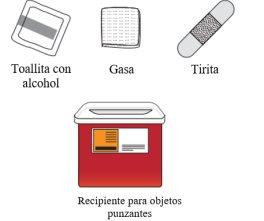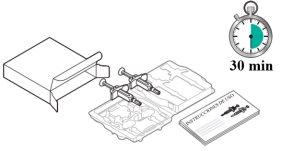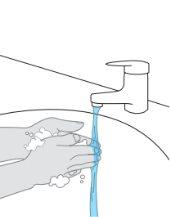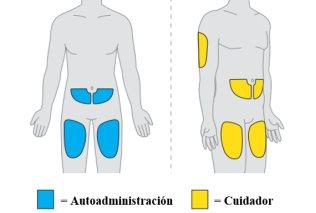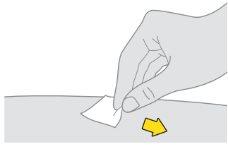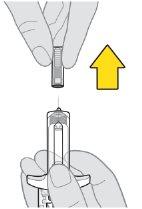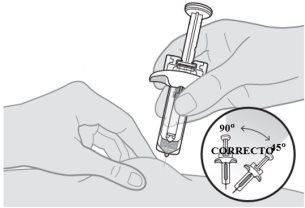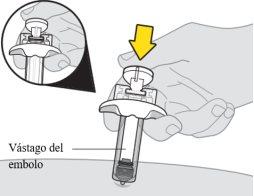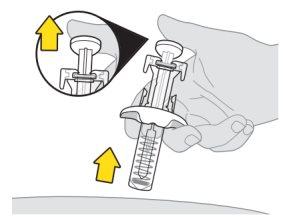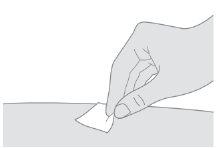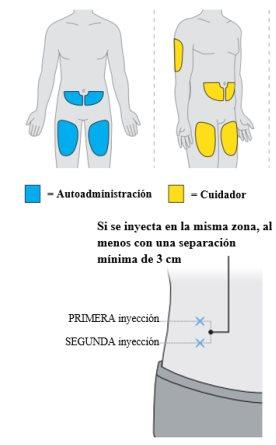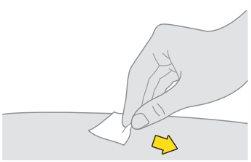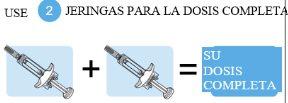
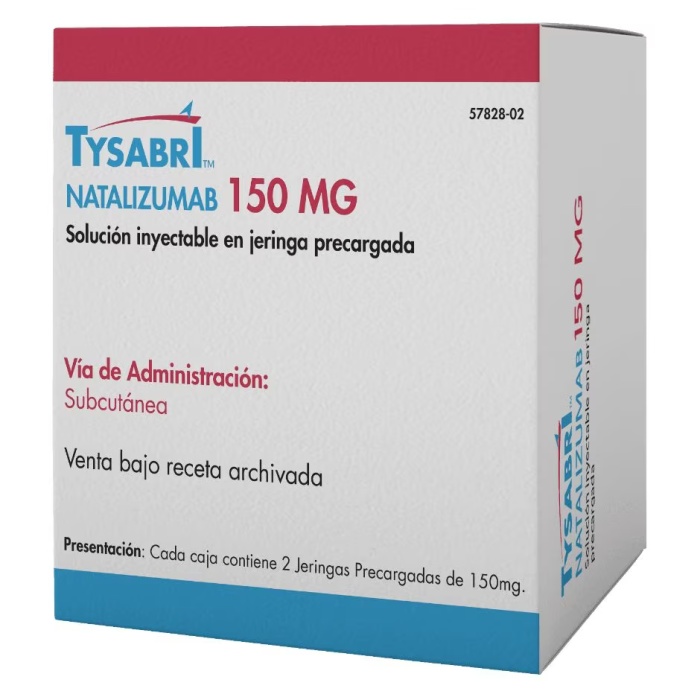
ТИЗАБРИ 150 мг раствор для инъекций в предварительно заполненном шприце


Инструкция по применению ТИЗАБРИ 150 мг раствор для инъекций в предварительно заполненном шприце
Введение
Проспект: информация для пациента
Тисабри 150мг раствор для инъекций в предварительно заполненном шприце
Натализумаб
Прочитайте внимательно весь проспект перед началом использования этого лекарства, поскольку он содержит важную информацию для вас.
Помимо этого проспекта, вам будет предоставлена карта информации для пациента, и в случае самоадминистрирования или администрирования опекуном - список проверки перед введением. Они содержат важную информацию о безопасности, которую вы должны знать до получения и во время лечения Тисабри.
- Сохраните этот проспект и карту информации для пациента, поскольку вам может потребоваться снова прочитать их. Сохраните проспект и карту информации для пациента с собой во время лечения и в течение шести месяцев после последней дозы этого лекарства, поскольку могут возникнуть побочные эффекты даже после прекращения лечения.
Если вы или ваш опекун вводите лечение, проверьте список проверки перед введением перед каждой дозой.
- Если у вас есть какие-либо сомнения, проконсультируйтесь с вашим врачом.
- Это лекарство было назначено только вам, и его не следует давать другим людям, даже если у них такие же симптомы, как у вас, поскольку оно может нанести им вред.
- Если вы испытываете побочные эффекты, проконсультируйтесь с вашим врачом, даже если это побочные эффекты, которые не указаны в этом проспекте. См. раздел 4.
Содержание проспекта:
- Что такое Тисабри и для чего он используется
- Что вам нужно знать перед началом приема Тисабри
- Как вводится Тисабри
- Возможные побочные эффекты
- Хранение Тисабри
- Содержание упаковки и дополнительная информация
1. Что такое Тисабри и для чего он используется
ТИСАБРИ используется для лечения рассеянного склероза (РС). Он содержит активное вещество натализумаб. Это так называемое моноклональное антитело.
РС вызывает воспаление в мозге, которое повреждает нервные клетки. Это воспаление возникает, когда белые кровяные клетки попадают в мозг и спинной мозг. Это лекарство предотвращает попадание белых кровяных клеток в мозг. Это уменьшает повреждение нервов, вызванное РС.
Симптомы рассеянного склероза
Симптомы РС могут варьироваться от пациента к пациенту; возможно, вы испытываете некоторые или ни один из них.
Они могут включать: проблемы с ходьбой, онемение лица, рук или ног; проблемы со зрением; усталость; чувство неустойчивости или головокружения; проблемы с мочевым пузырем и кишечником; трудности с мышлением и концентрацией внимания; депрессия; острая или хроническая боль; проблемы с сексом; скованность и мышечные спазмы.
Когда симптомы ухудшаются, это называется обострением(также обострением или приступом). Когда возникает обострение, вы можете заметить симптомы внезапно, в течение нескольких часов, или с медленным прогрессом в течение нескольких дней. Симптомы обычно улучшаются постепенно (это называется ремиссией).
Как Тисабри может помочь
В исследованиях это лекарство уменьшило примерно вдвое увеличение инвалидности, вызванной РС, и уменьшило количество обострений РС примерно на две трети. Во время лечения этим лекарством вы можете не заметить никаких улучшений, но оно может продолжать действовать, чтобы предотвратить ухудшение РС.
2. Что вам нужно знать перед началом приема Тисабри
Прежде чем начать лечение этим лекарством, важно, чтобы вы и ваш врач обсудили пользу, которую вы можете получить от этого лечения, и риски, связанные с ним.
Тисабри не должен быть введен
- Если вы аллергичны к натализумабу или любому другому компоненту этого лекарства (перечисленному в разделе 6).
- Если у вас диагностирована прогрессивная мультифокальная лейкоэнцефалопатия(ПМЛ). ПМЛ - это редкое заболевание мозга.
- Если у вашей иммунной системыесть серьезная проблема. Это может быть вызвано заболеванием (например, ВИЧ-инфекцией) или лекарствами, которые вы принимаете или принимали в прошлом (см. ниже).
- Если вы принимаете лекарства, которые влияют на иммунную систему, включая определенные лекарства, используемые для лечения РС. Эти лекарства не могут быть использованы с Тисабри.
- Если у вас есть рак(за исключением определенного типа рака кожи, называемого базалиомой).
Предостережения и меры предосторожности
Проконсультируйтесь с вашим врачом, если Тисабри является наиболее подходящим лечением для вас. Сделайте это перед началом использования этого лекарства и когда вы принимаете его более двух лет.
Ведите учет
Чтобы улучшить прослеживаемость этого лекарства, ваш врач или фармацевт должны записать название и номер партии лекарства, которое было введено вам, в вашу медицинскую карту. Вы также можете записать эти данные на случай, если они вам понадобятся в будущем.
Возможная инфекция мозга (ПМЛ)
Некоторые люди, получавшие это лекарство (менее 1 из 100), имели редкую инфекцию мозга, называемую ПМЛ (прогрессивная мультифокальная лейкоэнцефалопатия). ПМЛ может вызвать серьезную инвалидность или смерть.
- Прежде чем начать лечение, врач проведет анализ кровидля обнаружения инфекции вирусом JC. Вирус JC - это обычный вирус, который обычно не вызывает болезни. Однако ПМЛ связана с увеличением вируса JC в мозге. Причина этого увеличения у некоторых пациентов, леченных Тисабри, неясна. Прежде чем и во время лечения Тисабри, ваш врач проведет анализ крови, чтобы проверить, есть ли у вас антитела к вирусу JC (антитела к ВJC), которые являются признаком того, что вы были инфицированы вирусом JC.
- Ваш врач проведет обследование с помощью магнитно-резонансной томографии (МРТ), которое будет повторено во время лечения, чтобы исключить ПМЛ.
- Симптомы ПМЛмогут быть похожи на симптомы обострения РС (см. раздел 4, Возможные побочные эффекты). Вы также можете иметь ПМЛ до 6 месяцев после прекращения лечения Тисабри.
Сообщите вашему врачу как можно скорее, если вы заметите, что ваш РС ухудшается или если вы заметите новые симптомы во время лечения Тисабри или до 6 месяцев после.
- Сообщите вашему партнеру или опекунамо том, на что они должны обратить внимание (см. также раздел 4, Возможные побочные эффекты). Некоторые симптомы могут быть трудными для обнаружения самостоятельно, такие как изменения настроения или поведения, спутанность сознания, трудности с речью и общением. Если вы испытываете любой из этих симптомов, возможно, вам придется пройти дополнительные обследования. Следите за симптомами в течение 6 месяцев после прекращения лечения Тисабри.
- Сохраните карту информации для пациента, которую ваш врач дал вам. Она содержит эту информацию. Покажите ее вашему партнеру или опекунам.
- Если вы или ваш опекун вводите лечение, проверьте список проверки перед введением перед каждой дозой.
Три вещи могут увеличить риск ПМЛс Тисабри. Если у вас есть два или более этих факторов риска, риск увеличивается еще больше:
- Если у вас есть антитела к ВJCв крови. Они являются признаком того, что вирус находится в вашем организме. Вам будут проведены тесты перед и во время лечения Тисабри.
- Если вы получаете длительное лечениеТисабри, особенно если оно длится более двух лет.
- Если вы принимали лекарство, называемоеиммунодепрессантом, которое снижает активность иммунной системы.
Вирус JC также вызывает другое заболевание, называемое НЦГ по ВJC (нейронопатия гранулярных клеток, вызванная вирусом JC), которое возникло у некоторых пациентов, получавших это лекарство. Симптомы НЦГ по ВJC похожи на симптомы ПМЛ.
У пациентов с более низким риском ПМЛваш врач может повторно проводить анализы, чтобы проверить:
- Если у вас еще нет антител к ВJC в крови.
- Если вы получали лечение более 2 лет, если у вас еще низкий уровень антител к ВJC в крови.
Если кто-то имеет ПМЛ
ПМЛ можно лечить, и лечение Тисабри будет прекращено. Однако некоторые люди испытывают реакцию, когда Тисабри удаляется из организма. Эта реакция (известная как СИРИили синдром воспалительной реабилитации иммунной системы) может ухудшить ваше состояние, включая ухудшение функции мозга.
Будьте внимательны к другим инфекциям
Некоторые инфекции, отличные от ПМЛ, также могут быть серьезными и могут быть вызваны вирусами, бактериями и другими причинами.
Сообщите врачу или медсестре немедленно, если вы считаете, что у вас есть инфекция (см. также раздел 4, Возможные побочные эффекты).
Изменения количества тромбоцитов в крови
Натализумаб может уменьшить количество тромбоцитов в крови, которые отвечают за свертывание. Это может привести к расстройству, называемому тромбоцитопенией (см. раздел 4), при котором ваша кровь может не свертываться достаточно быстро, чтобы остановить кровотечение. Это может привести к появлению синяков, а также к более серьезным проблемам, таким как чрезмерное кровотечение. Сообщите вашему врачу немедленно, если вы заметите необъяснимые синяки, красные или фиолетовые пятна на коже (называемые петехиями), кровотечение из порезов на коже, которое не останавливается или гноится, длительное кровотечение из десен или носа, кровь в моче или кале или кровотечение в белой части глаз.
Дети и подростки
Не вводите это лекарство детям или подросткам младше 18 лет.
Другие лекарства и Тисабри
Сообщите вашему врачу, если вы принимаете, недавно принимали или можете принять любое другое лекарство.
- Это лекарство не должно быть введено, если вы сейчас проходите лечение лекарствами, которые влияют на вашу иммунную систему, такими как определенные лекарства для лечения РС.
- Возможно, вы не сможете использовать это лекарство, если вы когда-либо принимали лекарство, которое влияет на иммунную систему.
Беременность и лактация
- Не используйте это лекарство, если вы беременны, если только ваш врач не обсудил это с вами. Если вы беременны, считаете, что можете быть беременной или планируете стать беременной, немедленно сообщите об этом вашему врачу.
- Не кормите грудью, пока принимаете Тисабри.Ваш врач поможет вам решить, следует ли вам прекратить кормить грудью или прекратить принимать лекарство.
Если вы беременны или кормите грудью, считаете, что можете быть беременной или планируете стать беременной, проконсультируйтесь с вашим врачом перед использованием этого лекарства. Ваш врач будет учитывать риск для ребенка и пользу для матери.
Вождение и использование машин
Головокружение - это очень частый побочный эффект. Если вы испытываете этот симптом, не驾айте транспортные средства и не используйте машины.
Тисабри содержит натрий
Это лекарство содержит менее 1 ммоль натрия (23 мг) на дозу 300 мг; это означает, что оно практически не содержит натрия.
3. Как вводится Тисабри
Инъекции Тисабри будут назначены врачом, имеющим опыт лечения РС. Ваш врач может直接 перевести вас с другого лекарства на Тисабри, если нет признаков проблем, вызванных предыдущим лечением.
- Ваш врач назначит анализ кровидля обнаружения антител к ВJC и других возможных проблем.
- Ваш врач проведет обследование с помощью МРТ, которое будет повторено во время лечения.
- Для перехода с некоторых лекарств от РСваш врач может порекомендовать вам подождать некоторое время, чтобы убедиться, что большая часть предыдущего лекарства была удалена из вашего организма.
- Если ваше состояние позволяет, ваш врач может обсудить с вами возможность получения инъекций вне больницы (например, дома). Эти инъекции могут быть введены медицинским работником, вамиเอง или опекуном, если вы соответствуете определенным критериям. Вы все равно должны посещать медицинское учреждение или больницу для приемов, включая периодические анализы крови и обследования МРТ.
- Если ваш врач решит, что вы подходите для самоадминистрирования (или администрирования опекуном), медицинский работник будет наблюдать за вами во время введения первых двух доз (2 инъекции каждая).
- Медицинский работник даст вам или вашему опекуну подробные инструкции и покажет, как подготовить и ввести лекарство, прежде чем вы начнете использовать шприцы впервые.
- Если ваш врач решит, что вы подходите для самоадминистрирования или администрирования опекуном, убедитесь, что вы прочитали карту информации для пациента, чтобы просмотреть список симптомов ПМЛ и список проверки перед введением перед каждой дозой. Если появляется или ухудшается какой-либо симптом, не вводите дозу и немедленно свяжитесь с вашим врачом.
- Рекомендуемая доза для взрослых составляет 300 мг один раз в четыре недели.
- Каждая доза вводится в две инъекциипод кожу, в бедро, живот (не менее 6 см от пупка) или заднюю часть руки (только в случае инъекции медицинским работником или опекуном). Введение занимает до 30 минут.
- В конце проспекта предоставлена информация о том, как подготовить и ввести лекарство.
Если вы прекратите лечение Тисабри
Важно постоянное введение Тисабри, особенно в первые месяцы лечения. Важно продолжать лечение, пока вы и ваш врач не решите, что оно помогает вам. Не прекращайте принимать лекарство без рекомендации вашего врача. Пациенты, которые получили одну или две дозы Тисабри, а затем сделали перерыв в лечении на 3 месяца или более, имели более высокую вероятность аллергической реакции при возобновлении лечения.
Проверка аллергических реакций
Некоторые пациенты испытывали аллергическую реакцию на это лекарство. Ваш врач будет проверять наличие аллергических реакций во время инъекций и в течение 1 часа после. В случае самоадминистрирования или администрирования опекуном, если вы испытываете аллергическую реакцию, прекратите инъекцию и немедленно обратитесь к врачу. См. также раздел 4, Возможные побочные эффекты.
Если вы пропустили введение Тисабри
Если вы не получили свою обычную дозу Тисабри, поговорите с вашим врачом, чтобы он ввел ее как можно скорее. После этого вы можете продолжать получать Тисабри каждые 4 недели.
Необходимо вводить две шприцы, чтобы обеспечить полную дозу. Важно, чтобы обе шприцыбыли введены, и чтобы вы следовали назначенной схеме введения. Если вы или ваш опекун вводите инъекции и пропустили дозу или ввели только одну шприцу, свяжитесь с вашим врачом как можно скорее, чтобы получить рекомендации.
Сработает ли Тисабри всегда?
У некоторых пациентов, получавших Тисабри, естественная защита организма может помешать лекарству работать правильно со временем, поскольку организм производит антитела к лекарству. Ваш врач может решить, что это лекарство не работает правильно для вас на основе анализа крови и прекратит лечение, если это необходимо.
Если у вас есть какие-либо другие вопросы о использовании Тисабри, спросите вашего врача. Следуйте точно инструкциям по введению лекарства, изложенным в этом проспекте или указанным вашим врачом. В случае сомнений спросите вашего врача.
Подкожное введение обозначается как SC на этикетке шприца.
4. Возможные побочные эффекты
Как и все лекарства, это лекарство может вызывать побочные эффекты, хотя не все люди их испытывают.
Сообщите своему врачу или медсестре немедленно, если вы заметите любой из следующих симптомов.
Признаки инфекции мозга
- Изменения в личности и поведении, такие как спутанность сознания, бред или потеря сознания
- Судороги (эпилептические приступы)
- Головная боль
- Тошнота/рвота
- Затвердевание шеи
- Чрезмерная чувствительность к яркому свету
- Лихорадка
- Сыпь на коже (на любой части тела)
Эти симптомы могут быть вызваны инфекцией мозга (энцефалит или ЛМП) или оболочки, покрывающей его (менингит).
Признаки других тяжелых инфекций
- Необъяснимая лихорадка
- Тяжелый понос
- Затруднение дыхания
- Продолжительная головокружение
- Головная боль
- Потеря веса
- Отсутствие энергии
- Нарушение зрения
- Боль или покраснение глаза (глаз)
Признаки аллергической реакции
- Крапивница (сыпь с зудом)
- Отек лица, губ или языка
- Затруднение дыхания
- Боль или дискомфорт в груди
- Увеличение или уменьшение артериального давления (ваш врач или медсестра предупредят вас, если они контролируют ваше давление)
Более вероятно, что они возникнут во время или сразу после инъекции.
Признаки возможной проблемы с печенью
- Желтый цвет кожи или белого глаза
- Необычное потемнение мочи
- Аномальный тест функции печени
Если вы испытываете любой из побочных эффектов, описанных выше, или если вы считаете, что у вас есть инфекция, обратитесь к врачу или медсестре немедленно. Покажите свою карту информации для пациентаи этот листок любому врачу или медсестре, который будет лечить вас, не только вашему неврологу.
Другие побочные эффекты
Очень частые(могут повлиять на более 1 из 10 человек)
- Инфекция мочевыводящих путей
- Боль в горле и заложенность или выделения из носа
- Головная боль
- Головокружение
- Чувство дискомфорта (тошнота)
- Боль в суставах
- Усталость
Частые(могут повлиять на 1 из 10 человек)
- Анемия (уменьшение количества красных кровяных телец, что может сделать вашу кожу бледной и сделать вас без дыхания или энергии)
- Аллергия (гиперчувствительность)
- Озноб
- Крапивница (сыпь с зудом)
- Рвота
- Лихорадка
- Затруднение дыхания (диспноэ)
- Покраснение лица или тела (рубец)
- Инфекции, вызванные вирусом герпеса
- Дискомфорт вокруг места, где вам была сделана инъекция. Может быть боль, синяки, покраснение, зуд или отек
Нечастые(могут повлиять на до 1 из 100 человек)
- Тяжелая аллергия (анафилактическая реакция)
- Лейкоэнцефалопатия множественных прогрессивных поражений (ЛМП)
- Воспалительное расстройство после прекращения приема лекарства
- Отек лица
- Увеличение количества белых кровяных телец (эозинофилия)
- Уменьшение количества тромбоцитов
- Легкое образование синяков (пурпура)
Редкие(могут повлиять на до 1 из 1000 человек)
- Инфекция, вызванная вирусом герпеса в глазу
- Тяжелая анемия (уменьшение количества красных кровяных телец, что может сделать вашу кожу бледной и сделать вас без дыхания или энергии)
- Сильный отек под кожей
- Высокие уровни билирубина в крови (гипербилирубинемия), которые могут вызывать симптомы, такие как желтушность глаз или кожи, лихорадка и усталость
Неизвестная частота(не может быть оценена на основе доступных данных)
- Редкие инфекции мозга и глаз
- Повреждение печени
Сообщите врачу как можно скорее, если вы считаете, что у вас есть инфекция.
Вы также найдете эту информацию на карте информации для пациента, которую вам дал ваш врач.
Сообщение о побочных эффектах
Если вы испытываете любой побочный эффект, обратитесь к врачу, даже если это возможные побочные эффекты, которые не указаны в этом листке. Вы также можете сообщить о них напрямую через национальную систему уведомления, включенную в Приложение V. Сообщая о побочных эффектах, вы можете помочь предоставить больше информации о безопасности этого лекарства.
5. Хранение ТИСАБРИ
Храните это лекарство в недоступном для детей месте.
Не используйте это лекарство после даты истечения срока годности, указанной на этикетке и коробке. Дата истечения срока годности - последний день месяца, указанного.
Хранить в холодильнике (при температуре от 2°C до 8°C).
Не замораживать.
Хранить шприцы в наружной упаковке, чтобы защитить их от света.
Шприцы-инжекторы можно хранить при комнатной температуре (до 30°C) в течение максимального срока до 24 часов, включая время, необходимое для того, чтобы они достигли комнатной температуры для введения. Шприцы можно снова поместить в холодильник и использовать до истечения срока годности, указанного на этикетке и коробке. Дата и время, когда упаковка была удалена из холодильника, должны быть указаны на коробке. Утилизируйте шприцы, если они оставались вне холодильника более 24 часов. Не используйте внешние источники тепла, такие как горячая вода, для нагрева шприцев-инжекторов.
Не используйте это лекарство, если вы заметите частицы в жидкости или изменения цвета жидкости.
6. Содержимое упаковки и дополнительная информация
Состав Тисабри
Активное вещество - наталizuмаб.
Каждая предварительно заполненная шприц-инъектор емкостью 1 мл содержит 150 мг наталizuмаба.
Другие компоненты:
Монобазический фосфат натрия моногидрат
Дибазический фосфат натрия гептахидрат
Хлорид натрия (см. раздел 2 «Тисабри содержит натрий»)
Полисорбат 80 (Е 433)
Вода для инъекций
Внешний вид продукта и содержимое упаковки
Тисабри представляет собой бесцветную или слегка желтоватую, слегка опалесцирующую или опалесцирующую жидкость.
Каждая пачка содержит две шприц-инъектора.
Тисабри выпускается в упаковках, содержащих 2 предварительно заполненных шприц-инъектора.
Владелец разрешения на маркетинг и ответственное лицо за производство
Biogen Netherlands B.V.
Prins Mauritslaan 13
1171 LP Badhoevedorp
Нидерланды
Для получения дополнительной информации о этом лекарственном средстве можно обратиться к местному представителю владельца разрешения на маркетинг:
Бельгия/Белгique/Бельгия Biogen Belgium N.V./S.A. Тел.: +32 2 219 12 18 | Литва Biogen Lithuania UAB Тел.: +370 5 259 6176 |
| Люксембург/Люксбург Biogen Belgium N.V./S.A. Тел.: +352 2 219 12 18 |
Чешская Республика Biogen (Чешская Республика) s.r.o. Тел.: +420 255 706 200 | Венгрия Biogen Hungary Kft. Тел.: +36 (1) 899 9883 |
Дания Biogen (Дания) A/S Тел.: +45 77 41 57 57 | Мальта Pharma MT limited Тел.: +356 213 37008/9 |
Германия Biogen GmbH Тел.: +49 (0) 89 99 6170 | Нидерланды Biogen Netherlands B.V. Тел.: +31 20 542 2000 |
Эстония Biogen Estonia OÜ Тел.: +372 618 9551 | Норвегия Biogen Norway AS Тел.: +47 23 40 01 00 |
Греция Genesis Pharma SA Тел.: +30 210 8771500 | Австрия Biogen Austria GmbH Тел.: +43 1 484 46 13 |
Испания Biogen Spain SL Тел.: +34 91 310 7110 | Польша Biogen Poland Sp. z o.o. Тел.: +48 22 351 51 00 |
Франция Biogen France SAS Тел.: +33 (0)1 41 37 95 95 | Португалия Biogen Portugal Sociedade Farmacêutica Unipessoal, Lda Тел.: +351 21 318 8450 |
Хорватия Biogen Pharma d.o.o. Тел.: +358 (0) 1 775 73 22 | Румыния Johnson & Johnson Romania S.R.L. Тел.: +40 21 207 18 00 |
Ирландия Biogen Idec (Ирландия) Ltd. Тел.: +353 (0)1 463 7799 | Словения Biogen Pharma d.o.o. Тел.: +386 1 511 02 90 |
Исландия Icepharma hf Тел.: +354 540 8000 | Словакия Biogen Slovakia s.r.o. Тел.: +421 2 323 340 08 |
Италия Biogen Italia s.r.l. Тел.: +39 02 584 9901 | Финляндия Biogen Finland Oy Тел.: +358 207 401 200 |
Кипр Genesis Pharma (Кипр) Ltd Тел.: +357 22 76 57 15 | Швеция Biogen Sweden AB Тел.: +46 8 594 113 60 |
Латвия Biogen Latvia SIA Тел.: +371 68 688 158 |
Дата последнего пересмотра этой инструкции:05/2025
Другие источники информации
Подробная информация о этом лекарственном средстве доступна на сайте Европейского агентства по лекарственным средствам: https://www.ema.europa.eu
--------------------------------------------------------------------------------------------------------------------
ИНСТРУКЦИИ ПО ПРИМЕНЕНИЮ
Тисабри 150мг
раствор для инъекций
наталizuмаб
инъекция под кожу
Полная доза=две предварительно заполненные шприц-инъектора
Эти «Инструкции по применению» содержат информацию о том, как вводить лекарственное средство с помощью предварительно заполненного шприц-инъектора Тисабри.
Прочитайте эти инструкции перед началом использования шприц-инъектора Тисабри (далее именуемого «шприц-инъектор» в этих инструкциях) и каждый раз, когда получаете новую упаковку. Там может быть новая информация.
Эта информация не заменяет консультацию с вашим медицинским специалистом о вашем заболевании или лечении.
Части устройства Тисабри
Не удаляйте крылья для удержания. Крылья для удержания позволят вам держать шприц-инъектор более крепко во время процесса инъекции.

Важная информация, которую необходимо знать перед введением Тисабри
Тисабри поставляется в предварительно заполненном шприц-инъекторе (далее именуемом «шприц-инъектор» в этих инструкциях). Каждая пачка Тисабри содержит два шприц-инъектора. Вы должны использовать оба шприц-инъектора, с максимальным интервалом 30 минут между ними, чтобы получить полную дозу.
- В случае самоинъекции или введения лекарственного средства опекуном ваш медицинский специалист должен научить вас или вашего опекуна, как подготовить и ввести шприц-инъекторы перед первым использованием. Если вы или ваш опекун вводите инъекции и пропустили дозу или ввели только один шприц-инъектор, свяжитесь со своим фармацевтом или лечащим врачом.
- Шприц-инъекторы предназначены только для подкожных инъекций (введения непосредственно в жировую прослойку под кожей).
- Каждый шприц-инъектор можно использовать только один раз (однократное использование). Их нельзя повторно использовать.
- Не делитесь шприц-инъекторами с другими людьми, даже если они страдают от того же заболевания, что и вы. Вы можете заразить их инфекцией или заразиться ею сами.
Примечание для медицинских специалистов:
Пациентов необходимо наблюдатьво время подкожных инъекций и в течение 1 часа последля обнаружения признаков и симптомов реакций на инъекцию, включая гиперчувствительность. После первых шести доз Тисабри, независимо от пути введения, пациентов необходимо наблюдать после подкожной инъекции по медицинским показаниям.
Хранение Тисабри
- Держите шприц-инъектор и все лекарственные средства вне поля зрения и досягаемости детей.
- Храните шприц-инъекторы в холодильнике (при температуре от 2°C до 8°C).
- Если необходимо, шприц-инъекторы можно хранить при комнатной температуре (до 30°C) и до 24 часов в общей сложности. Если шприц-инъекторы находились вне холодильника более 24 часов, не используйте их.
- Храните шприц-инъекторы в оригинальной упаковке, чтобы защитить их от света.
- Не замораживайте шприц-инъекторы и не подвергайте их воздействию температур выше 30°C.
- Шприц-инъекторы можно вернуть в холодильник и использовать до указанной на этикетке и упаковке даты истечения срока годности.
Подготовка инъекции Тисабри:
|
|
|
|
Неиспользуйте внешние источники тепла, такие как горячая вода, для нагрева шприц-инъекторов. | |
|
|
|
|
Неиспользуйте шприц-инъектор, если он просрочен. | |
| |
Неиспользуйте шприц-инъектор, если он поврежден или треснут. | |
| |
Неиспользуйте шприц-инъектор, если жидкость содержит видимые частицы. Неиспользуйте шприц-инъектор, если он был уронен до использования. Сообщите вашему медицинскому специалисту, если у вас возникли какие-либо проблемы с шприц-инъекторами. | |
Возможно, вы увидите пузырьки в лекарственном средстве. Это нормально. Примечание:внешний вид лекарственного средства может измениться после его извлечения из холодильника. Это нормально. | |
|
|
|
|
Нетрогайте, не обмахивайте и не дуйте на очищенную зону. |
Введение первой шприц-инъектора
Примечание:возможно, вы увидите каплю жидкости на конце иглы. Это нормально. |
|
| |
|
|
|
|
Убедитесь, что вы нажали на шток поршня до конца, чтобы вышло все лекарственное средство и защелкнулся защитный колпачок иглы. | |
|
|
Если защитный колпачок иглы не активируется, чтобы покрыть иглу, невозвращаете колпачок на шприц-инъектор. Поместите его в контейнер для острых предметов и свяжитесь с вашим медицинским специалистом для получения помощи. | |
|
|
Введение второй шприц-инъектора
|
|
|
|
Не трогайте, не обмахивайте и не дуйте на очищенную зону. | |
Введите инъекции одна за другой без значительного задержки. Вторая инъекция должна быть введена не позднее 30 минут после первой. |
|
Утилизация Тисабри
|
|
Не выбрасывайте контейнер для острых предметов или использованные шприц-инъекторы в домашний мусор. | |
Если у вас нет контейнера для острых предметов, вы можете запросить его у вашего медицинского специалиста или использовать домашний контейнер, который:
Когда контейнер для острых предметов почти заполнен, необходимо следовать рекомендациям вашего сообщества о правильной утилизации. Могут быть государственные или местные правила о том, как утилизировать использованные шприц-инъекторы. Не выбрасывайте использованный контейнер для острых предметов в домашний мусор, если только правила вашего сообщества не разрешают этого. Не перерабатывайте контейнер для острых предметов. |
- Страна регистрации
- Активное вещество
- Требуется рецептДа
- Производитель
- Информация носит справочный характер и не является медицинской рекомендацией. Перед приемом любых препаратов проконсультируйтесь с врачом. Oladoctor не несет ответственности за медицинские решения, принятые на основе этого контента.
- Аналоги ТИЗАБРИ 150 мг раствор для инъекций в предварительно заполненном шприцеФорма выпуска: ИНЪЕКЦИОННЫЙ РАСТВОР ДЛЯ ИНФУЗИЙ, 300 мгАктивное вещество: НатализумабПроизводитель: Sandoz GmbhТребуется рецептФорма выпуска: ИНЪЕКЦИОННЫЙ РАСТВОР ДЛЯ ИНФУЗИЙ, 20 мгАктивное вещество: НатализумабПроизводитель: Biogen Netherlands B.V.Требуется рецептФорма выпуска: ИНЪЕКЦИОННЫЙ РАСТВОР ДЛЯ ИНФУЗИЙ, 120 мг (80 мг/кг) белимумабАктивное вещество: БелимумабПроизводитель: Glaxosmithkline (Ireland) LimitedТребуется рецепт
Врачи онлайн по ТИЗАБРИ 150 мг раствор для инъекций в предварительно заполненном шприце
Консультация по дозировке, побочным эффектам, взаимодействиям, противопоказаниям и продлению рецепта на ТИЗАБРИ 150 мг раствор для инъекций в предварительно заполненном шприце – по решению врача и с учетом местных правил.




